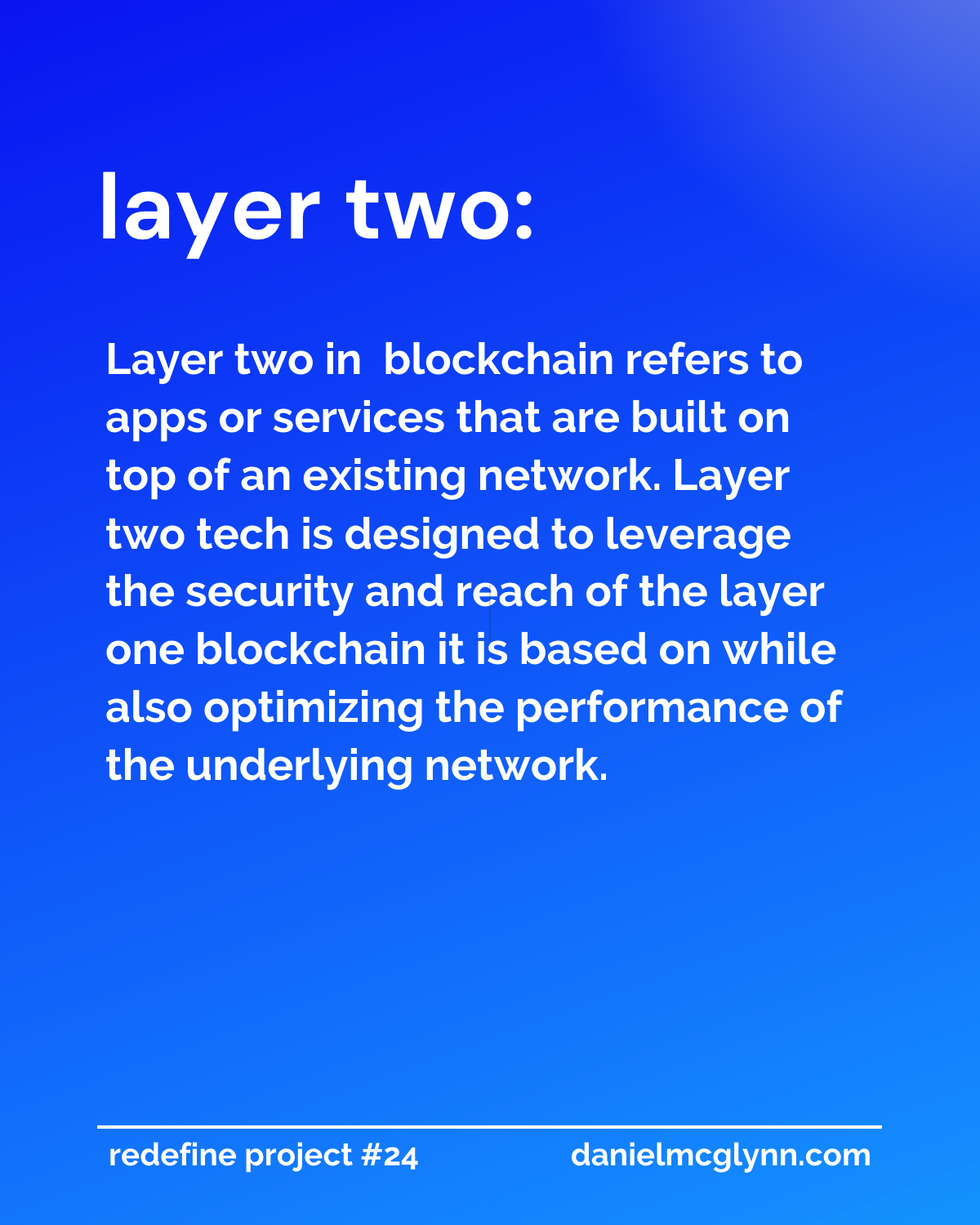A layer two blockchain is important infrastructure because it provides a means to make blockchain tech more customizable and upgradable without having to amend or change the underlying layer one network.
A layer one foundational blockchain, like Bitcoin or Ethereum, for example, can set rules and capture network effects — that is they become more valuable, more useful, and more secure as more people use the network.

At the same time, layer one blockchains have limitations, like the number of transactions they can handle during a set block time, or the ability to process complex smart contracts without consuming block space or congesting the network.
That’s where layer two solutions come in.
A layer two solution is specifically designed to work with the underlying layer one blockchain. One example is the Lightning Network, a layer two network designed to make small payments and transactions fast and cheap on Bitcoin’s layer one infrastructure.
In a lot of ways, layer one tech is like getting a car from a standard manufacturer, and then layer two solutions are like adding aftermarket parts to boost performance and to further custom the underlying machine to meet specific needs.
But why do we need a layer two?
Robust and mature layer one blockchains like Bitcoin and Ethereum are reliable and secure, but the tradeoff for that reliability and security is that they are not very adaptable. They do change and upgrade over time (Ethereum’s switch from a proof-of-work consensus mechanism to a proof-of-work consensus mechanism is one example), but they are also following well articulated plans for how the protocol will unfold and develop over time.
It’s the math-based planning and the code-based execution that make blockchain such an interesting and important alternative to traditional finance.
When navigating blockchain layer ones versus layer twos, it’s important to keep in mind a couple of things:
- Not all layer twos are created the same way — and just because they are built on top of, or interact with a robust base layer, doesn’t mean that the layer two itself is secure or time-tested. Common vulnerabilities might include leaky smart contracts or other vulnerabilities related to how the layer two actually communicates and transmits data back to the layer one.
- Some layer two solutions also issue their own assets, Polygon, which is an Ethereum layer two, is one example but there are a lot of token-based layer twos that leverage Ethereum’s smart contracts.
Zooming out, the system of layers in blockchain demonstrate the versatility of decentralized distributed ledgers.
There are two main attributes at work here. The first is composability, which is the ability to build software-based systems that are modular and can plug into other systems. The second is interoperability, which means that systems can work together (like a layer two leveraging the network of a layer one) to create something that increases the utility to both the layer two application and the underlying layer one blockchain.
What is layer two in crypto?
In a lot of ways, layer one tech is like getting a car from a standard manufacturer, and then layer two solutions are like adding aftermarket parts to boost performance and to further custom the underlying machine to meet specific needs.